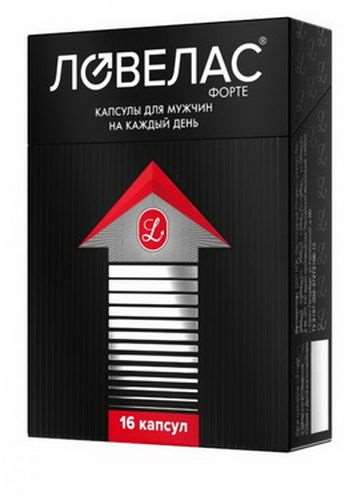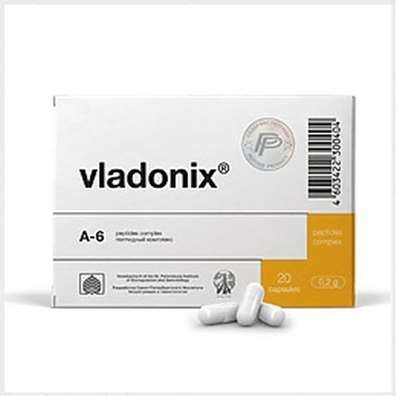Instruction for use: Phenybut
I want this, give me price
Dosage form: substance; substance-powder; rablets
Active substance: Aminophenylbutyric acid
ATX
N05BX Other anxiolytics
Pharmacological groups:
Nootropics
Anxiolytics
The nosological classification (ICD-10)
F40.2 Specific (isolated) phobias: Claustrophobia
F41 Other anxiety disorders: Anxiety status; Anxiety; Chronic alarm; Sense of anxiety; Anxious-hypothetical states; Stopping an alarm; Nonpsychotic anxiety disorders
F41.1 Generalized anxiety disorder: Generalized anxiety disorders; Generalized alarm; Phobic neurosis; Anxiety reaction; Anxious neurosis
F48 Other neurotic disorders: Neurosis; Neurological diseases; Neurotic disorders; Neurotic condition; Psychoneurosis; Anxious-Neurotic Conditions; Chronic neurotic disorders; Emotional reactive disorders
F51.0 Insomnia of inorganic etiology: Situational insomnia; Situational sleep disorders
F95 Teaki: Teak child; Children's teak; Nerve Teacks in Children; Nervous teack; Teak
F98.5 Stammering [Stammering]: Stammering and other speech defects in children; Logoneurosis; The clonic form of stuttering; Stuttering
G47.0 Disorders of falling asleep and maintaining sleep [insomnia]: Insomnia; Insomnia, especially difficulty falling asleep; desynchronosis; Prolonged sleep disturbance; Difficulty falling asleep; Short-term and transient insomnia; Short-term and chronic sleep disorders; Short or shallow sleep; Violation of sleep; Disturbed sleep, especially in the phase of falling asleep; Infringements sleep; sleep disturbances; Neurotic sleep disturbance; Shallow superficial sleep; shallow sleep; Poor quality of sleep; Night awakening; sleep Pathology; Postsomnic violation; transient insomnia; Trouble falling asleep; Early awakening; Early morning awakening; Early awakening; sleep disorder; somnipathy; persistent insomnia; difficult to fall asleep; difficulty falling asleep; Difficulty falling asleep in children; persistent insomnia; Worsening sleep; Chronic insomnia; Frequent night and / or early morning awakening; Frequent nocturnal awakening and a sense of the depth of the non-sleep; Night waking
H81.0 Meniere's disease: Meniere's syndrome/ disease; Meniere's disease; Meniere's syndrome; Labyrinth dropsy; endolymphatic hydrops
H81.9 Unspecified Violation of vestibular function: Labyrinth, vestibular disorders; Labyrinth disorders; vestibular nystagmus; kohleovestibulyarny disorder; Kohleovestibulyarny syndrome vascular origin; Violation of the microcirculation in the maze; Ischemic disorders of hearing and balance
R53 Malfunction and fatigue: Asthenic disorders; Asthenic conditions; Asthenic phenomena; Asthenic syndrome; Asthenic disorder; Asthenic state; Asthenic phenomenon; Asthenia; Astheno-adynamic subdepressive state; Asthenovegetative symptoms; Asthenic-autonomic symptomatology; Asthenic autonomic disorder; Asthenodepressive disorder; Astheno-depressive disorder; Asthenodepressive state; Astheno-depressive state; Asthenoneurotic disorder; Astheno-neurotic state; Fast fatiguability; Flu of young workaholics; Influenza yuppie; Diabetic asthenia; Exhaustion of the nervous system; Exhaustion physical; Malaise; Nervous depletion with depression; General mental fatigue; General physical fatigue; General malaise; Pathological fatigue; Increased fatigue; Mental fatigue; Mental exhaustion; Astenovegetative Syndrome; Chronic Fatigue Syndrome; Decrease in total activity; The state of increased fatigue; Conditions of increased fatigue; Mental fatigue; Prostration; Fatigue; Fatigability; Physical fatigue; Physical and mental fatigue; Physical overwork; Functional asthenic conditions; Chronic fatigue; Chronic asthenic conditions
T75.3 Motion Slewing: Movement Disease; Disease of the air; Disease of the sea; Kinetosis; Airsickness; Seasickness; Swaying; Symptoms of motion sickness; Kinetosis; The motion sickness syndrome
Z100 * CLASS XXII Surgical practice: Abdominal surgery; adenomectomy; Amputation; Coronary angioplasty; Angioplasty of the carotid arteries; Antiseptic skin treatment for wounds; Antiseptic Hand; Appendectomy; atherectomy; Balloon coronary angioplasty; Vaginal hysterectomy; The coronary bypass; Interventions in the vagina and cervix; Interventions on the bladder; Intervention in the mouth; Restoration and reconstructive surgery; Hand hygiene of medical personnel; Gynecologic surgery; Gynecological intervention; Gynecological surgery; Hypovolemic shock during operations; Disinfection of purulent wounds; Disinfection of wounds edges; Diagnostic intervention; Diagnostic procedures; Cervical Diathermocoagulation; Long-surgery; Replacing the fistula catheters; Infection in orthopedic surgery; Artificial heart valve; cystectomy; Short-term outpatient surgery; Short-term operation; Short surgical procedures; Krikotireotomiya; Blood loss during surgery; Bleeding during surgery and in the postoperative period; Kuldotsentez; laser photocoagulation; laser coagulation; retinal laser coagulation; Laparoscopy; Laparoscopy in Gynecology; CSF fistula; Small gynecological operations; Small surgical procedures; Mastectomy and subsequent plastic; mediastinotomy; Microsurgical operations on the ear; Mukogingivalnye operation; suturing; Minor surgery; neurosurgical operation; Immobilization of the eyeball in ophthalmic surgery; testectomy; pancreatectomy; Perikardektomiya; The period of rehabilitation after surgery; The period of convalescence after surgery; Percutaneous transluminal coronary angioplasty; Pleural thoracentesis; Pneumonia postoperative and posttraumatic; Preparation for surgical procedures; Preparation for surgery; Preparation of the surgeon's hands before surgery; Preparation of the colon for surgical procedures; Postoperative aspiration pneumonia in neurosurgical and thoracic surgery; Postoperative nausea; Postoperative bleeding; postoperative granuloma; postoperative shock; The early postoperative period; myocardial revascularization; Radiectomy; gastric Resection; bowel resection; uterine Resection; liver Resection; enterectomy; Resection of part of the stomach; Reocclusion of the operated vessel; Bonding tissues during surgical procedures; Removal of sutures; Condition after eye surgery; Condition after surgery; Condition after surgery in the nasal cavity; Condition after gastrectomy; Status after resection of the small intestine; Condition after tonsillectomy; Condition after removal of the duodenum; Condition after phlebectomy; Vascular surgery; Splenectomy; Sterilization of surgical instruments; Sterilization of surgical instruments; sternotomy; Dental surgery; Dental intervention in periodontal tissues; strumectomy; Tonsillectomy; Thoracic surgery; Thoracic surgery; total gastrectomy; Transdermal intravascular coronary angioplasty; Transurethral resection; Turbinektomiya; Removal of a tooth; cataract surgery; Removal of cysts; tonsillectomy; Removal of fibroids; Removing the mobile primary teeth; Removing polyps; Removing broken tooth; Removal of the uterus body; Removal of sutures; Fistula likvoroprovodyaschih ways; Frontoetmoidogaymorotomiya; Surgical infection; Surgical treatment of chronic limb ulcers; Surgery; The surgery in the anal area; The surgery on the colon; Surgical practice; The surgical procedure; Surgical interventions; Surgery on the gastrointestinal tract; Surgical procedures on the urinary tract; Surgical procedures on the urinary system; Surgical intervention of the genitourinary system; Surgical procedures on the heart; Surgical manipulation; surgery; Surgery on the veins; Surgical intervention; Vascular surgery; Surgical treatment of thrombosis; Surgery; cholecystectomy; Partial gastric resection; hysterectomy; Percutaneous transluminal coronary angioplasty; Percutaneous transluminal angioplasty; Coronary artery bypass; tooth Extirpation; Extirpation of milk teeth; pulpectomy; pulsative cardiopulmonary bypass; tooth Extraction; teeth Extraction; cataract extraction; Electrocoagulation; endourological intervention; episiotomy; Etmoidotomiya; Complications after tooth extraction
Composition and release form
Tablets - 1 table.
Phenibut 250 mg
In a planar cell pack of 10; In a pack of cardboard 1 or 2 packs.
Pharmachologic effect
Mode of action - nootropic, tranquilizing.
Pharmacodynamics
Phenibutum has elements of nootropic activity, has a tranquilizing effect, reduces tension, anxiety, improves sleep; Prolongs and intensifies the effect of hypnotics, opioid analgesics, neuroleptic substances. The drug does not possess an anticonvulsant activity.
Indications for the Phenybutum
Asthenic and anxiety-neurotic states;
Anxiety, anxiety, fear;
insomnia;
As a sedative before surgical interventions;
Meniere's disease;
Dizziness associated with dysfunction of the vestibular apparatus;
Prevention of motion sickness;
Stuttering and ticking in children.
There is evidence of an increase in the effect of antiparkinsonian drugs (due to the presence of a dopaminopositive component) under the influence of Phenibutum.
Contraindications
Individual intolerance to the drug;
pregnancy;
The period of breastfeeding;
liver failure.
Side effects
Usually, phenibut is well tolerated. At the first reception of Phenibutum or with an overdose, drowsiness may occur.
Interaction
Strengthens the action of anxiolytic, neuroleptic, hypnotic, narcotic and anticonvulsants.
Do not combine with alcohol.
Dosing and Administration
Inside, after eating, adults - 0.25-0.5 g 3 times a day for 2-3 weeks. If necessary, increase the dose to 0.75 g (those over 60 years of age are prescribed no more than 0.5 g per reception).
Children under 8 years - 0.05-0.1 g per reception; From 8 to 14 years - 0.25 g per reception. For relief of alcohol withdrawal symptoms in the first days of treatment for 0.25-0.5 g 3 times during the day and 0.75 g per night, gradually reducing the dose. For the prevention of motion sickness prescribed for 1 hour before the alleged onset of an attack or at the first signs, once for 0.25-0.5 g. After the onset of severe motion sickness (vomiting, etc.), the drug is ineffective.
Overdose
Symptoms: severe drowsiness, nausea, vomiting.
Treatment: gastric lavage, induction of vomiting, symptomatic therapy (there are no specific antidotes).
Precautionary measures
With prolonged use, it is necessary to control the morphological composition of the blood (it is possible to develop eosinophilia when taking the drug in large doses); Control of liver function.
Special instructions
Care must be taken when working with mechanisms.
Storage conditions of the drug Phenybutum
In dry, the dark place at a temperature of no higher than 25 ° C.
Keep out of the reach of children.
The shelf life of the drug Phenybutum
3 years.
Do not use beyond the expiration date printed on the package.

 Cart
Cart





